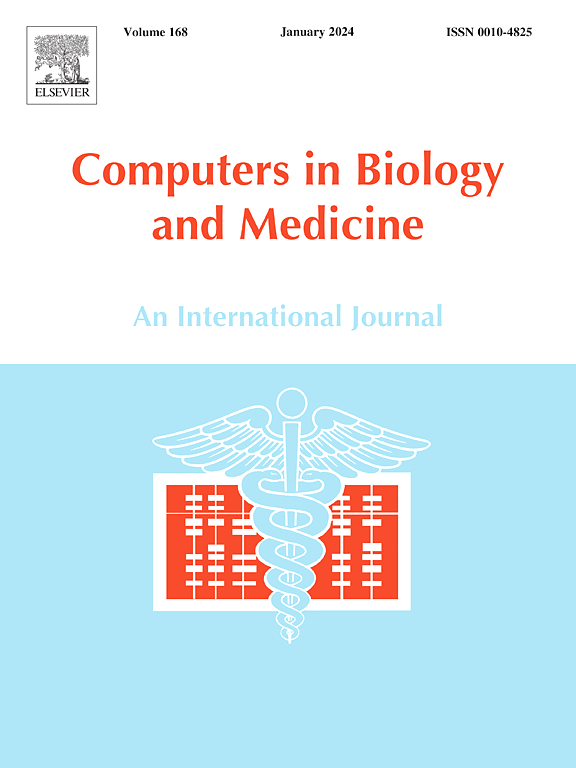通过机器学习和优化技术为女性提供心脏病治疗
IF 6.3
2区 医学
Q1 BIOLOGY
引用次数: 0
摘要
与男性相比,由于症状表现和生理特征的差异,女性心脏病发作的检测和治疗仍然明显不足,导致延误或错误诊断。为了解决这一问题,本研究引入了一种优化的集成学习方法,该方法利用了一种将水轮厂算法(WWPA)与随机分形搜索(SFS)相结合的新型投票分类器。提出的WWPA+SFS模型旨在通过整合多个机器学习分类器,包括高斯朴素贝叶斯、随机森林、逻辑回归、随机梯度下降分类器、支持向量分类器、决策树和k近邻,提高女性心脏病发作分类的准确性。综合临床数据集包括303例患者记录和14项特征,包括人口统计数据、运动引起的心绞痛、胸痛类型、主要血管计数、胆固醇水平、空腹血糖和静息心电图结果,用于评估。该模型的性能通过10倍交叉验证、方差分析(ANOVA)和Wilcoxon签名秩检验进行验证,并与其他基于优化的分类器(如灰狼优化(GWO)、鲸鱼优化算法(WOA)、粒子群优化(PSO)和遗传算法(GA)进行基准测试。提出的WWPA+SFS模型具有最高的分类准确率(97.01%),且在多个试验间方差较小。这些结果强调了所提出的方法在优化女性心血管护理诊断模型方面的稳健性和有效性,有可能减少误诊率,降低医疗保健成本,并有助于临床实践中个性化治疗的进步。本文章由计算机程序翻译,如有差异,请以英文原文为准。
Empowering heart attack treatment for women through machine learning and optimization techniques
Heart attack detection and treatment in women remain significantly under-optimized due to differences in symptom presentation and physiological characteristics compared to men, leading to delayed or incorrect diagnoses. Addressing this gap, this study introduces an optimized ensemble learning approach that leverages a novel voting classifier combining the Waterwheel Plant Algorithm (WWPA) with Stochastic Fractal Search (SFS). The proposed WWPA+SFS model is designed to enhance the accuracy of heart attack classification in women by integrating multiple machine learning classifiers, including Gaussian Naive Bayes, Random Forest, Logistic Regression, Stochastic Gradient Descent Classifier, Support Vector Classifier, Decision Tree, and k-nearest Neighbors. A comprehensive clinical dataset comprising 303 patient records and 14 features—covering demographic data, exercise-induced angina, chest pain type, major vessel count, cholesterol levels, fasting blood sugar, and resting electrocardiographic results—was used for evaluation. The model’s performance was validated using 10-fold cross-validation, Analysis of Variance (ANOVA), and the Wilcoxon Signed Rank Test, benchmarking it against other optimization-based classifiers such as Grey Wolf Optimization (GWO), Whale Optimization Algorithm (WOA), Particle Swarm Optimization (PSO), and Genetic Algorithm (GA). The proposed WWPA+SFS model achieved the highest classification accuracy (97.01%) and demonstrated low variance across multiple trials. These results underline the robustness and effectiveness of the proposed method in optimizing diagnostic models for women’s cardiovascular care, potentially reducing misdiagnosis rates, lowering healthcare costs, and contributing to personalized treatment advancements in clinical practice.
求助全文
通过发布文献求助,成功后即可免费获取论文全文。
去求助
来源期刊

Computers in biology and medicine
工程技术-工程:生物医学
CiteScore
11.70
自引率
10.40%
发文量
1086
审稿时长
74 days
期刊介绍:
Computers in Biology and Medicine is an international forum for sharing groundbreaking advancements in the use of computers in bioscience and medicine. This journal serves as a medium for communicating essential research, instruction, ideas, and information regarding the rapidly evolving field of computer applications in these domains. By encouraging the exchange of knowledge, we aim to facilitate progress and innovation in the utilization of computers in biology and medicine.
 求助内容:
求助内容: 应助结果提醒方式:
应助结果提醒方式:


